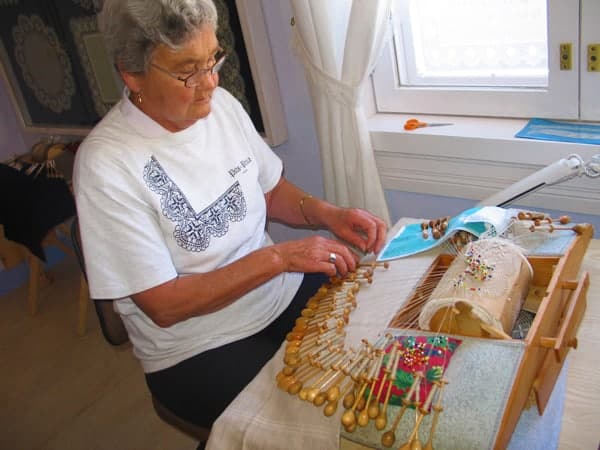
She could have been dealing blackjack in a top Las Vegas casino. The lace maker’s hands were a blur of activity as she picked up one wooden bobbin after another, working left to right unwinding the linen threads, then weaving and wrapping them in an intricate design.
But she wasn’t in a gambling den. She was sitting in a lace shop in Rauma, Finland, patiently explaining what she was doing to a half-dozen mesmerized tourists without dropping a thread. Cross and twist, cross and tighten, a picot here, a windmill there – and repeat and repeat and repeat, never forgetting to re-position all the pins that hold the plaits in place.
Lace is a medieval craft that’s always fascinated me. Portraits of the crowned heads of Europe are full of its ruffles and flourishes around the necklines and cuffs of both men and women.
The dainty edging on baby clothes is a modern echo of bobbin lace that sometimes is as fine as a spider’s web.
Italy, Belgium and Finland are three European countries still known for their tradition of handmade lace. There’s an island in an Umbrian lake near Perugia where old women still sit outside their houses, fingers flying as they create yards of the airy confection. Bruges has become the most-visited city in Belgium partially because of its lace-making history (even if most of the lace in its many shops is machine-made in China these days).
Finland, however, has Rauma. The city founded almost six centuries ago along the Gulf of Bothnia has a lace-making tradition as old as the town itself. And once you’ve visited some of the main attractions in Finland, Rauma should be at the top of your to-visit list.
The historic heart of the city of 37,000 has been designated a UNESCO World Heritage Site. There, among the brightly painted wooden houses dating back to the early 1700s, the city holds an annual Lace Week each July (this year’s dates for Lace Week are July 23-31) . I was drawn like a moth to a flame.
The earliest mention of lace making in Rauma is in the 1740s, when it was evidently already well established. In 1754, more than 2600 yards of bobbin lace were made in Rauma by an estimated 600 handcrafters. Many were girls and women, but young boys and “men too old to do anything else” also participated. By the 19th century, the development of machine-made lace on continental Europe put this cottage industry out of business.
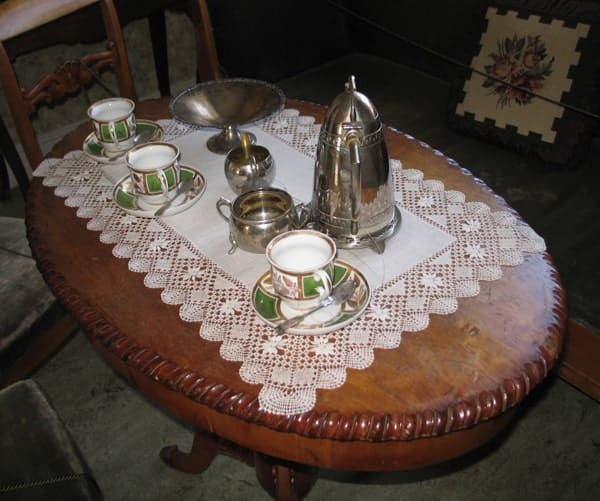
Today, there are at least 150 hobbyists in Rauma who still make lace the old-fashioned way — by hand, using wooden bobbins, a pillow with a built-in roller, a pattern, lots of pins and linen thread. Classes in the Rauma Adult Education Center have been turning out new bobbin lace enthusiasts since the 1950s.
There are three basic kinds of pillows used as the base in lace making. The “cookie” looks just like that (only much larger and puffier). The bolster is long, round like a tube but fat. The roller pillow preferred in Rauma has a base somewhat like a cookie pillow, but it’s inset with a roller section that can be rotated as the pattern is worked.
The earliest bobbins used by European lace makers were probably bone. Finland has lots of trees, so wooden ones are the norm in Rauma. Linen is the traditional fiber, because flax is an ancient crop in this part of the world, and remains an important agricultural product.
Just as on a sewing machine, the bobbins store the thread used for the lace. They also act as handles when moving the thread, and they add weight to the thread to keep tension against the pins.
The pins are the pivot points for the patterns, called pricking cards.
Crochet work, which also is made by hand, is a durable series of interconnected loops. The more fragile bobbin lace is a form of weaving, where each thread is attached to a bobbin so its individual path can be controlled. Starting with nothing but a pattern (many of which date back centuries), threads are woven and plaited into intricate patterns.
It all sounds so simple, but when you look at a lace maker’s pillow and see 38 bobbins in play – well, a lifetime wouldn’t be long enough for me to master the art.
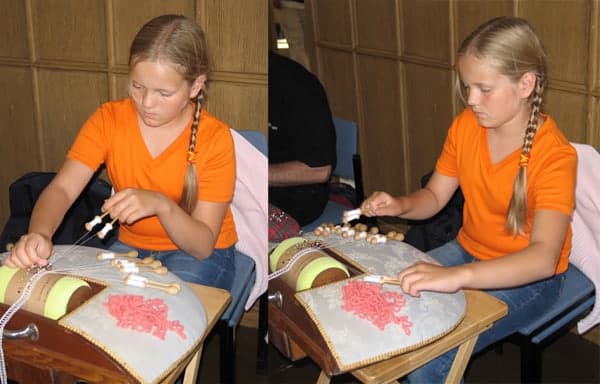
I did take heart, though, when I visited Culture Center Poselli, an exhibition hall filled with pitsikaupunki (lace makers) during the annual festival. A young girl of about 10 was bent over her pillow, slowly moving a dozen bobbins to make a lace ribbon about an inch wide. Hmmm. Now that’s more my speed!
Other places to see lace in Rauma – even when it isn’t Lace Week – include the Rauma Museum (with more than 600 different types of bobbin lace in a building dating from 1776) and Pits-Priia, a lace shop where I watched that master lace maker at work.
There are about 600 buildings in the historic center of Rauma, most of which remain private residences. If you pick up a self-guided walking tour brochure in the tourist office, you can wander through the narrow streets on your own. Don’t miss the statue of a bobbin lace maker by Kauko Räike in Helsinki Square or Tammela, the Old Rauma Renovation Center, which has exhibits outlining the painstakingly authentic restoration of the buildings included in the World Heritage Site.
For more information on visiting the area, check out the Rauma Regional Tourist Information Office.
Photos credits: ©Susan McKee; used with permission
NOTE: Some of the information for this article was gathered during a trip sponsored by Visit Finland.
You might also enjoy
Susan McKee is an independent scholar and freelance journalist specializing in history, culture and travel.




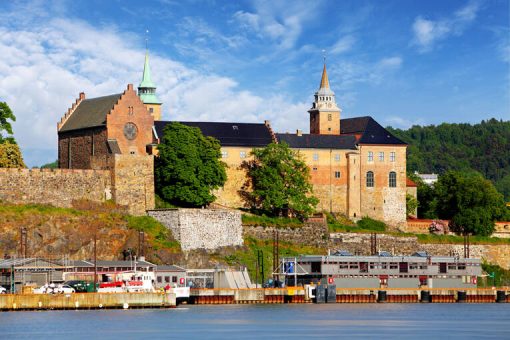
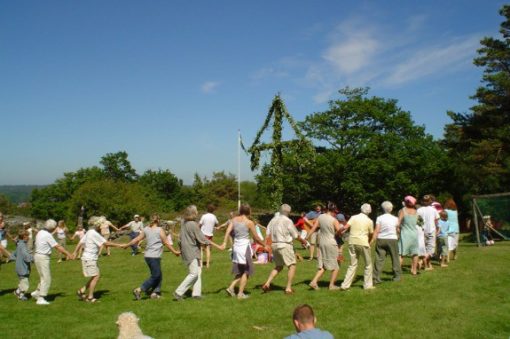


As a lace maker my self the article is very interesting